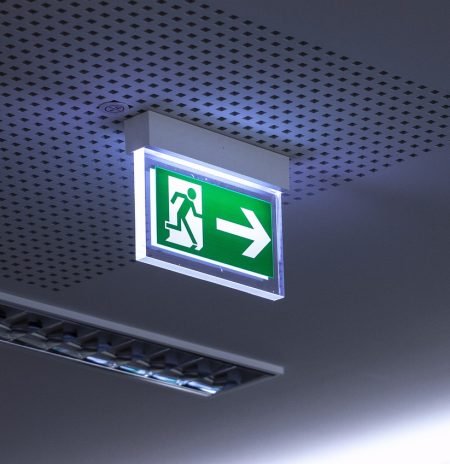Emergency Light Testing
At RTF Compliance, we specialize in emergency light testing to help ensure the safety and compliance of your premises. We provide reliable emergency light testing in Essex and cover the surrounding counties.
Our thorough testing process identifies any potential faults or issues, ensuring that your emergency lighting systems are functioning as intended in case of a power failure, while meeting all required safety standard.

Emergency Light Testing Procedures
- Monthly Tests: Quick checks to ensure lights are operational.
- Annual Tests: Full duration tests to confirm lights can operate for the required amount of time.
- Comprehensive Reporting: Detailed reports of each test, including any faults found and corrective actions taken.
- Visual Inspection: Checking the physical condition of emergency lights and ensuring they are free from damage or obstruction.
- Functional Test: Simulating a power failure to ensure all emergency lights operate correctly.
- Duration Test: Ensuring lights can operate for the full rated duration, typically 90 minutes or 3 hours.
- Battery and Bulb Checks: Verifying the condition and performance of batteries and bulbs.
Different Types Of Emergency Lighting
- Maintained Luminaires feature lamps that function during both normal power conditions and emergencies. These lights can either remain on continuously or be controlled by a switch (switch-maintained). If the lamp is turned off but an emergency occurs, it will automatically activate.
- Non-maintained Luminaires are designed to activate only during a power outage, serving as emergency lighting. The mains power is used to keep the battery charged at all times, ensuring it’s ready for use when needed.
- Central Battery Systems house the emergency lighting batteries at one or more remote points within a building. These systems provide power to all connected luminaires, whether they are maintained or non-maintained, during a power failure. Each luminaire includes a charge indicator (LED) that confirms the battery is charging when mains power is present. When mains power is lost, the LED goes out, and the lamp is powered by the battery. These remote battery systems generally offer a longer lifespan, often lasting up to 10 years. One key advantage of central systems is easier access for maintenance. In contrast, standalone luminaires might be positioned in hard-to-reach places, making battery replacements costly due to the need for specialized equipment, such as scaffolding for high installations.
- Standalone Luminaires are self-contained emergency lights with built-in batteries. These can either be maintained or non-maintained. Modern designs often utilize LED technology to meet specific lighting requirements. For instance, luminaires designed for escape routes provide long, linear light distributions, while anti-panic models have a wide, symmetrical spread of light to cover larger areas.
- Combined Luminaires contain multiple lamps, with at least one connected to the emergency power source and the others operating on mains power. These can also be configured as either maintained or non-maintained systems.
- Sustained Emergency Lighting involves a secondary lamp that functions exclusively during emergencies. This separate lamp is non-maintained, which reduces the chance of failure during emergencies since it’s only used in those situations.
- Exit Signage must clearly define escape routes from a building, and self-illuminated signs are typically the most effective solution. These signs must comply with regulations regarding size, color, brightness, and appropriate symbols, like the commonly recognized “running man” sign.
- Non-illuminated Signs, while often less expensive, still need to meet required visibility standards by being adequately lit. Unfortunately, these signs are sometimes overlooked in compliance checks, making them hard to see when the mains power fails.
Compliance & Standards
The Regulatory Reform (Fire Safety) Order 2005: Legal requirements for emergency lighting in commercial buildings.
- Local Building Codes: Ensuring adherence to any additional local regulations.
Benefits of Regular Testing:
- Safety: Ensures the safety of occupants during an emergency.
- Compliance: Helps avoid fines and legal issues by staying compliant with regulations.
- Peace of Mind: Regular testing provides assurance that your emergency lighting system will work when needed.
Quick Contact
What Are You Waiting For...
Make An Appointment
“Ensure safety and compliance with a company you can trust!”
Book your Service appointment today.
Opening Hours
Mon-Fri: 9am-5:30pm
Sat-Sun: 9am-3pm
Contact
Phone: 01245 201579
Email: info@rtfcompliance.co.uk
